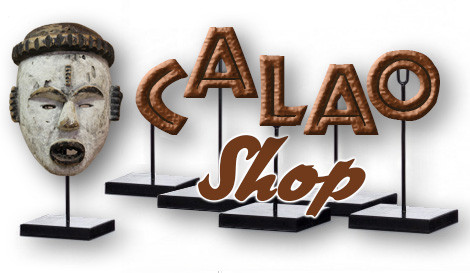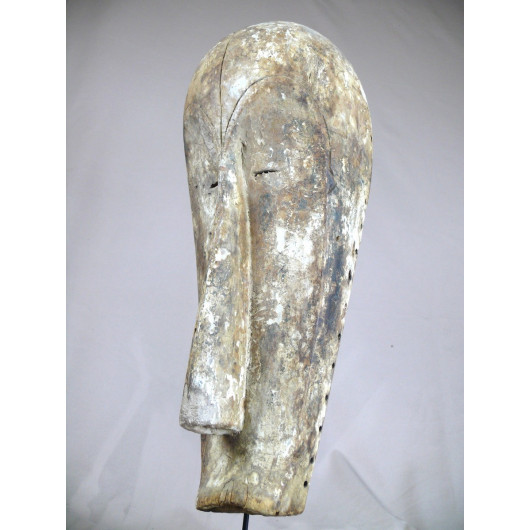Fang Ngil mask
The masks of the Ngil are recognizable by their face excessively elongated and their forehead curved; the face in the form of heart very elongated supports a thin and long nose...
-
 Secured payment
Secured payment
-
 Free shipping from 150 €
Free shipping from 150 €
-
 Guarantee "satisfied or refunded"
Guarantee "satisfied or refunded"
The Fang Ngil mask
Superb mask, wood and traces of kaolin, typical of the secret society of Ngil, ethnic Fang of Gabon
Height: 58 cm, width: 23 cm, beautiful wear patina
The secret society of Ngil
This secret society had as its object to make the order in the community reign; the sometimes excessive zeal (ritual murders) of its initiates led the French colonial authorities to prohibit it at the beginning of the XXème century.
Even if the masks of the Ngil are among the most prestigious and famous pieces of African art, we know little about their use; the rare descriptions of rituals of the Ngil remain almost silent on this aspect. It is known only that they intervened in ceremonies related to the rites of initiation and, above all, to the restoration of social order. They are therefore, for the most part, judicial masks.
The masks of Ngil
The masks of the Ngil are easily recognizable by their face dememusuredly elongated and their forehead curved; the face in the form of a very elongated heart supports a thin and long nose that overlooks a generally tiny mouth (but not always: Here, the mouth is in an unusual position). Eyes are often marked by scarifications whose meaning is unknown. These masks are remarkably sober (or how to represent a face with a few simple features?). The use of white color (kaolin) is an expression of the power of the spirits of the deceased (which gives the mask its authority).
The Fang ethnic group
Fang is a name given by the West to groups that spread over the territories of Cameroon, Equatorial Guinea and Gabon. This name covers different subgroups among which we could include the Bulu and the Mabea in the southern part of Cameroon, the Mvaï and the Ntumu in northern Gabon, the Okak and the Mvaï still on the border with Equatorial Guinea, the Betsi in the middle of Ogooué... Read more









